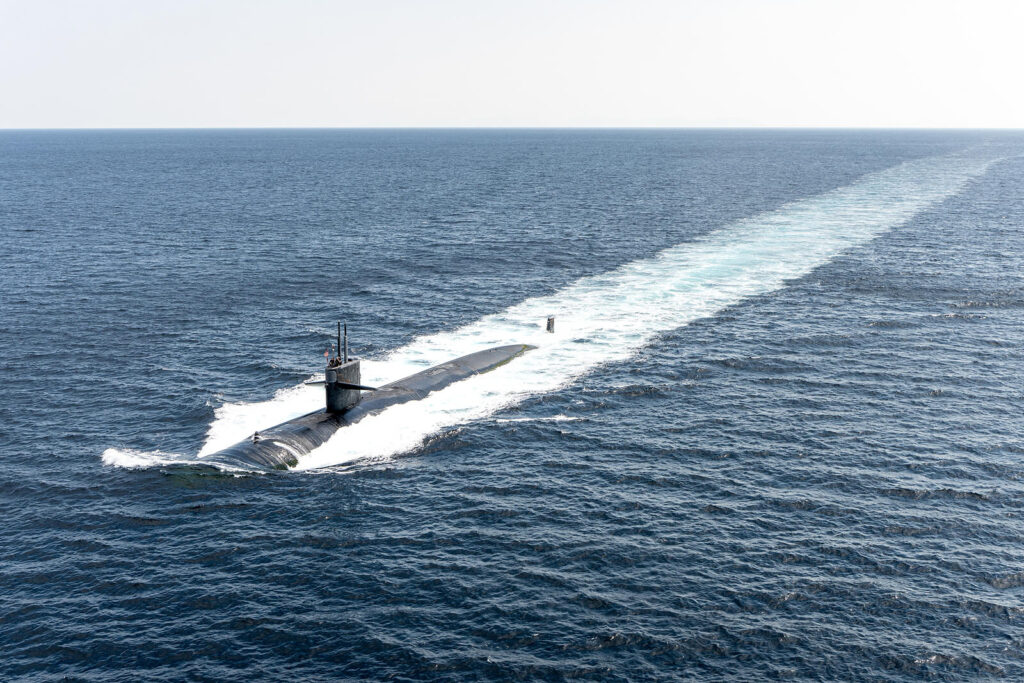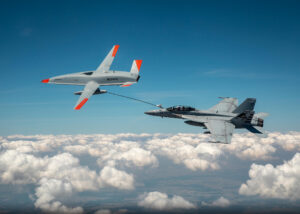Predicting the future is a messy affair, and one that militaries and governments the world over must grapple with every day. Nowhere is this more true than when it comes to underwater stealth platforms such as submarines and uncrewed underwater vehicles. While we may not know the shape of future conflicts, one thing we can foresee is the changing nature of the physical environment that these platforms operate in.
My research brings together predictions from the Intergovernmental Panel on Climate Change (IPCC) with data from the U.S. National Oceanic Atmospheric Administration (that itself drew from the 3,000 strong fleet of ocean-going Argo data-collection robots that the world’s oceanographic agencies use) and fed them into my own custom-built simulator to simulate their effects.
The results were stark. The short version is this:
- As the ocean becomes warmer and its chemical makeup changes, sound will propagate through the water differently due to reduced signal loss.
- By the year 2100, ultrasonic sonar transmissions in the 30 kilohertz range will propagate between 40 and 87 percent further than they do under 2023 conditions, while mid-frequency sonar transmissions in the 10 kilohertz range will propagate between 15 percent and 25 percent further than they do under conditions today.
- The effect will vary by latitude, with polar oceans experiencing the most extreme changes.
In other words, with sound traveling farther the ocean will be noisier, and undersea stealth platforms such as submarines will simultaneously find it more difficult to hide in some circumstances and easier in others—and that is only the beginning.
A changing underwater soundscape
Research and analysis by the IPCC notes that the world’s oceans are undergoing dramatic changes in their physical and chemical properties due to climate change. Factors such as increased acidity, decreased salinity, altered temperatures and changing ocean layer stratification play a crucial role in the behavior of underwater sound. And all these things are currently in flux and expected to worsen over coming decades.
These changes affect the underwater acoustic environment in complex ways with profound consequences for submarine warfare, undersea research, commercial applications and for marine life. The simulator that I built allowed me to investigate the Representative Concentration Pathway (RPC) 8.5 climate model proposed by the IPCC in an oceanic hydroacoustic context, using the data from NOAA to make predictions based on the data.
Commercial and military implications
The impact of changing hydroacoustics is far-reaching, extending to military, commercial and scientific applications where it will have a pronounced impact on technology that relies on hydroacoustics. This includes active and passive sonar, hydrophones, echo sounders, fish finders and sub-seafloor profiling devices—but the most significant affect will be for the underwater stealth technologies that are essential for military operations.
While the ocean environment will be louder and underwater platforms like submarines will become more detectable, there will conversely also be greater opportunities for platforms to hide among the ocean noise. This means that there will be a need for better sensors, great processing power, improved algorithms and filtering techniques that can be upgraded over time to give them greater ability to filter out ambient noise to aid detection. This will have a cumulative impact beyond submarines and will also affect undersea surveillance programs as well.
The year 2100 may seem a long way, but the planning for these changes needs to begin now.
The time involved in taking a submarine from concept design to service means that U.S. and allied naval architects need to consider the material choices for hull construction. Marine engineers need to consider the mechanical components that generate the noise, and electrical engineers need to consider the next generation of sonars and sensors—among other considerations.
Case Study: An Arleigh Burke in the Greenland Sea.
Imagine that a U.S. Navy Arleigh Burke-class warship is on patrol in the Greenland Sea. The ship has received intelligence that an enemy submarine is in the area, and so it pings the Arctic waters at 3,500 hertz (I chose this frequency at random). Under conditions recorded by a robot in the Greenland Sea earlier this month, that sonar ping would be audible to a range of just under 100 miles away. The simulator suggests that in 2100, that range will have increased to be audible at a range of almost 148 miles. This may have substantial impact on how nuclear ballistic missile submarines operate, because the geographical area covered by one sonar ping will increase.
Factors in the ocean will change, too. In the context of submarines specifically, thermal layers are likely to have a greater density differential from the cooler water below them. This means that submarines will simultaneously become easier to detect when there is no thermal layer, and harder to detect when there is. Further complicating the matter, increasing noise across the full acoustic spectrum and increasing noise intensity overall will work to make hiding in coastal shallows much easier. In other words, submarine and anti-submarine operations are going to become more complex.
Challenges and future research
We need much more research on this subject to understand its effects. My research represents a significant step toward understanding the effects of climate change on ocean hydroacoustics, but it has limitations due to small sample size and its reliance on a simplified model.
To gain a more comprehensive understanding, future research must focus on refining the simulator, expanding the dataset and accounting for complex factors such as underwater interactions with objects and the behavior of acoustical caustics (the absorption by the sea floor and surface).
The information gained may make a significant difference to future warfare in the world’s oceans and have implications especially for the U.S. and U.K., which use stealthy submarines to house ICBMs and maintain nuclear deterrence.
It could also be of use to the United States, the United Kingdom and Australia, who have inked a trilateral security agreement for the Indo-Pacific region in which the U.S. and U.K are assisting Australia in acquiring nuclear-powered submarines.
The three countries are seeking a capability edge against potential adversaries, and this research could provide a powerful assist.
You can download a copy of the research paper from the ADROITA website here.







